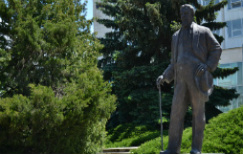POPULATION IN RURAL AREAS – TWENTY YEARS OF POLAND'S MEMBERSHIP IN THE EU
Author: Agnieszka Wrzochalska
Abstract
Since the beginning of the 21st century, a few positive changes have taken place in rural areas in
Poland, including those concerning rural society. At the same time, the countryside has begun to
become an attractive place to live, especially areas located near cities, well connected to them. The
aspirations and needs of the rural population have begun to resemble the needs of city dwellers. The
lifestyle of residents in cities and rural areas has begun to become more uniform. A smaller and
smaller percentage of the population has begun to work in agriculture. Several non-agricultural jobs
have been created in rural areas, and non-agricultural jobs are also available in nearby towns. Therefore,
e panding the educational competences or the level of formal education of the rural population
to increase its importance on the labor market in the city and in the countryside is very important.
At the same time, both the average size of the farm and the scale of neighboring leases have increased
(Karwat-Wozniak, 2015; Karwat-Wozniak and Buks, 2022) and, to put it simply, it can be noted
that even in one village, only a few professionally trained farmers (Doichinova, Stoyanova, 2020)
run a farm.
A positive phenomenon is the increase in the life e pectancy of Polish residents, but at the same
time, the progressive process of population ageing has been noted. During the period of EU membership,
the rural population realized its educational aspirations by increasing the level of education
and reducing educational differences in relation to the population in cities. Activities to popularize
adult education have become important, consisting both in improving accessibility and in raising
awareness of the benefits of lifelong learning and acquiring civilizational competences, including
improving digital skills. It should be noted that the course of demographic phenomena, starting from
2020, was greatly influenced by the outbreak of the COVID 19 pandemic, which contributed to a
higher number of deaths than in previous years and thus deepening the unfavorable trends of population
ageing that have appeared in the last dozen or so years in our country and Europe.
The article is an attempt to make a social, and primarily demographic, characterization of rural residents
in Poland at the threshold of the third decade of the 21st century and the changes that have
taken place in this area over the last twenty years.

